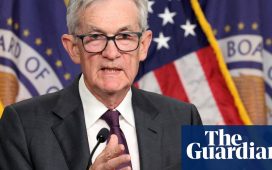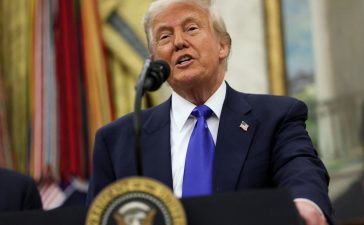Investing.com – The “vast majority” of Federal Reserve policymakers signaled that it may be appropriate to begin cutting rates next month should the recent progress on inflation continue.
“The vast majority observed that, if the data continued to come in about as expected, it would likely be appropriate to ease policy at the next meeting.,” the of Fed’s July meeting showed on Wednesday.
About 63% of traders expect the Fed to deliver a rate cut next month, according to Investing.com’s
The central bank’s monetary policy has been in data dependent mode since it delivered its tenth rate hike in May last year.
The decision to keep rates in the current rage for more than year, however, has seen monetary policy move into more restrictive policy as the pace of inflation continued to slow.
A “few participants” backed this view, according to minutes, and noted that “ongoing disinflation, with no change in the nominal target range for the policy rate, by itself results in a tightening in monetary policy.”
Deflation set to continue
Recent economic data, however, including a string of more convincing inflation data that point to ongoing deflation has given members more confidence that inflation is on a path toward the 2% goal.
The most recent core consumption personal expenditure, or CPE, the central bank’s preferred inflation gauge, came it at 2.6% in the 12 months through June, unchanged from the prior month, though well below the peak of 5.4% seen in February 2022.
“Almost all participants observed that the factors that had contributed to recent disinflation would likely continue to put downward pressure on inflation in coming months,” the Fed minutes showed.
The data-dependent approach will likely remain a priority for the Fed even as it moves toward a rate cuts. Most fed members “emphasized” the need to outline that Fed policy decisions would be “conditional evolution of the economy rather than being on a preset path.”
Fed now keeping a closer eye on labor market as payroll gains possibly ‘overstated’
The progress on inflation has shifted the Fed’s focus, however, to the labor market, where a mixed string of recent data have sparked investor jitters.
“Participants agreed that these and other indicators of labor market conditions merited close monitoring,” according to the minutes.
The July nonfarm payrolls increased by only 114,000, missing economist expectations for 179,000, while the unemployment unexpectedly tick up to 4.3% from 4.1%.
The uptick in unemployment rate sparked worries about the state of the U.S. economy, leading to a major selloff in risk assets and calls for aggressive Federal Reserve rate cuts at upcoming meetings. Since then, however, a string of data including weekly jobless claims have helped to calm investor worries, tempering bets on a jumbo-sized Fed cuts.
Fed members downplayed the the weaker payrolls data, the minutes showed, as “many participants noted that reported payroll gains might be overstated.”
“Several” members, the minutes added, believe that the breakeven rate employment growth, or the number of payrolls gains needed to keep the unemployment rate constant in a flat labor force participation rate may be lower.
On Wednesday data supported this notion that payrolls gains may have been overstated after Bureau of Labor Statistics significantly revised down the number of jobs created in the 12 months through March.
The Bureau of Labor Statistics revised down March 2024’s employment gains by 818,000 positions earlier in the session, as part of the agency’s annual benchmark review of payroll data.
While the minutes were “bit stale” given economic and market developments since the decision, Evercore ISI said Wednesday that they were “a bit less hawkish-stale than we feared they might be, and confirm the debate was already swinging firmly in favor of cuts.”






